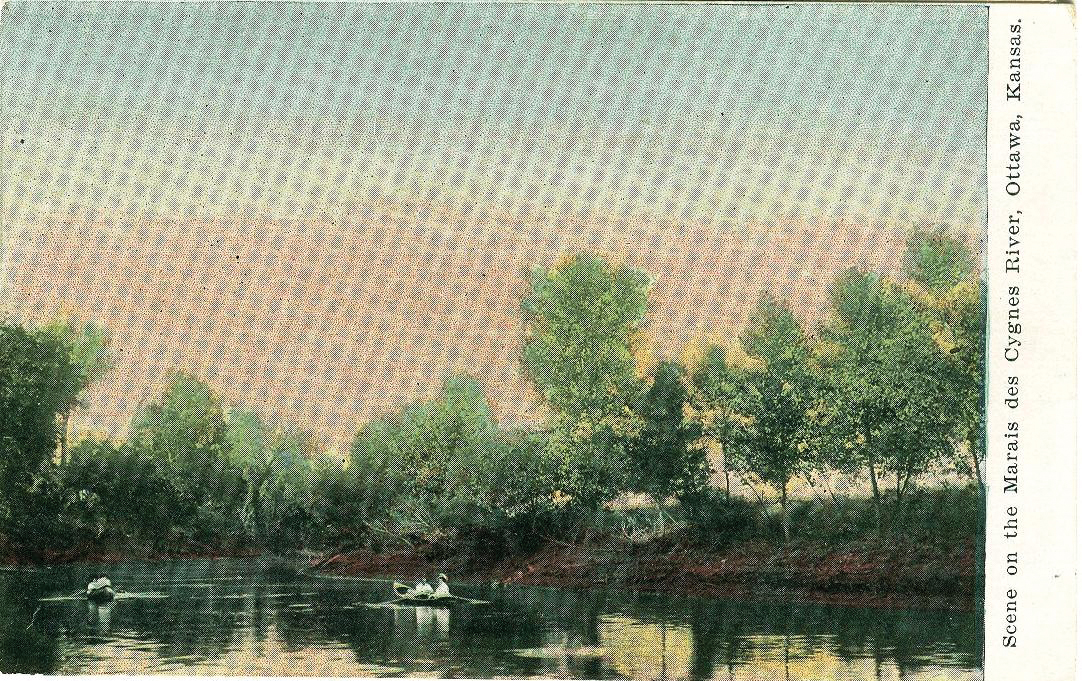Michael Bushnell
Northeast News
Mention the town Trading Post, Kan., and you’ll more than likely get blank stares from whoever you are talking to at the time. The tiny hamlet on the Missouri/Kansas border, roughly 30 miles north of Fort Scott, is no more than a bend in modern day Highway 52 on the banks of the Marais Des Cygnes River.
Translated from the French, the name means “Marsh of the Swans.” In this pre-WWI postcard published for Jim’s 10-cent store, J.E. Gover proprietor in Ottawa, Kan., shows a pastoral scene near Ottawa.
During the spring of 1858, however, the Kansas/Missouri border skirmishes came to a bloody and murderous head at what became known as the Marais Des Cygnes Massacre, culminating the Bleeding Kansas era prior to the American Civil War.
Charles Hamilton, a Georgian native and pro-slavery sympathizer, was dispatched to the border area in 1855 to ensure that Kansas entered the Union as a slave state. Tiny Trading Post had become a local hang-out for pro-slavery forces in the area. On one occasion, Kansas Free Staters cleared out the headquarters, dumping all the whiskey and warning all pro-slavery rebels to leave the area. Hamilton, incensed by the involuntary evacuation, sent a message ordering all pro-slavery sympathizers “to come out of the territory at once, as we are coming up there to kill snakes, and will treat all we find there as snakes.”
On May 19, 1858, Hamilton went “snake hunting.” Leaving the Butler area with roughly 30 men on horseback, he rode for Kansas. The gang arrived in Trading Post with 10 or 11 captured Free State men, none of whom were reported to have been involved in any border violence.
Most who knew Hamilton thought he was not capable of the kind of violence they had witnessed on other farms and towns in the area during the run up to the war. They were tragically wrong as Hamilton lined the men up and ordered them shot – Hamilton firing the first shot. Five Free Staters were killed in the fracas.
Hamilton and his band quickly escaped back into Missouri. Only one of the gang, William Griffith of Bates County, Mo., was brought to justice for the brutal actions during the raid. Arrested in 1863, Griffith was hanged on Oct. 30 of that same year.
Charles Hamilton returned to Georgia after the war and died in 1880. The bloody action inspired poet John Greenleaf Whittier to write a poem entitled “Le Marais du Cygne,” which appeared in the September 1858 Atlantic Journal.
The final stanza reads:
“On the lintels of Kansas
That blood shall not dry;
Henceforth the Bad Angel
Shall harmless go by;
Henceforth to the sunset,
Unchecked on her way,
Shall Liberty follow
The march of the day.”
The site is listed as a national Historic Landmark and a large sign bears a description of the events of that fateful day in May,1858.



















